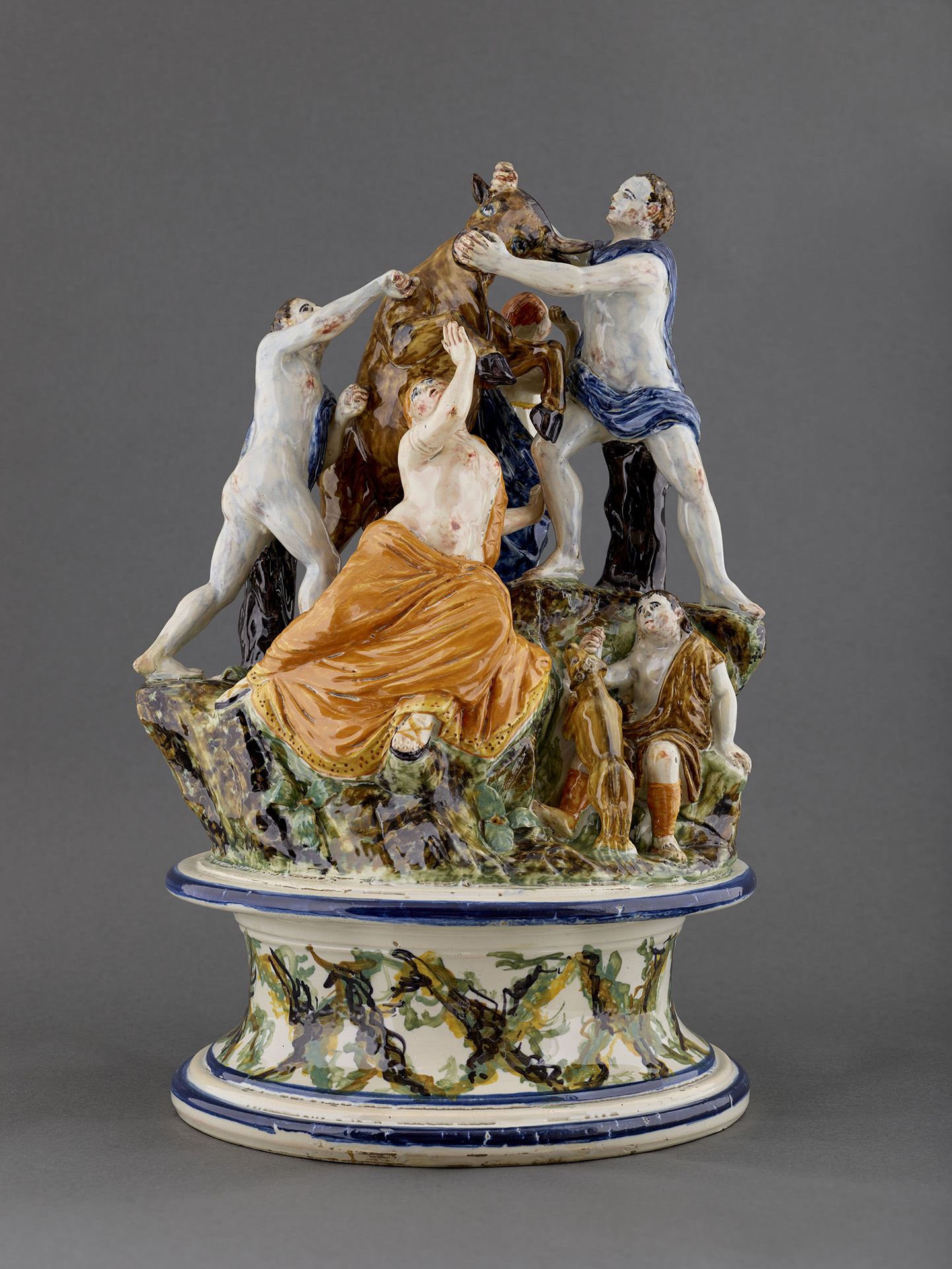
Manufactura de Alcora
Sculptural group: Farnese Bull
19th century
WORK INFORMATION
Ceramic, polychrome earthenware, height: 43 cm
The Alcora manufactory was founded in 1727 by the 9th Count of Aranda on land he owned in what is now the province of Castellón. The aim was to create a luxury earthenware and porcelain factory that would compete with foreign manufactories. Royal privileges, including tax exemption on the export of pieces and the free entry of materials from abroad, allowed this manufactory to operate until the middle of the 19th century despite the fact that it barely made any profits.
Throughout its existence, the factory became a model of organisation and a point of reference in terms of aesthetics thanks to the recruitment of foreign specialists, artists and “secretists” who claimed to know the secret of porcelain manufacture. In addition, the creation of an apprentice academy enabled the manufactory to continue to provide top quality production.
In addition to crockery, toilet articles, writing instruments, candlesticks and all kinds of functional objects, sculptural groups were also made in Alcora from 1745 onwards. In 1787, Pierre Cloostermans (1752-1798), a French chemist who had worked as a painter in the porcelain manufactories of Sèvres and Limoges, was hired to manage the porcelain department of the factory in Castellón. His contributions were of the highest value, for he not only improved the porcelain and pipe-clay recipes, but introduced the neoclassical style in Alcora and was also responsible for renewing the repertoire of groups of figures. Among the latter, one of the most successful models was the Farnese Bull, a sculpture produced in five different sizes and in two materials: earthenware and pipe clay. The piece in the Banco Santander Collection is a medium-sized example. The origins of the Farnese Bull are to be found in ancient Greece, where a prime version of the sculpture (no longer extant) was made in bronze by two sculptors from Tralles (modern-day Turkey). Many engravings of this sculptural group, which depicts the torture of Dirce, were made from the time it was discovered in the 16th century until the 18th century.
This piece, which rests on a moulded plinth decorated with veins imitating marble, was produced by the factory when it was owned by Ramón Girona (1858-1895). It should be noted that the moulds from the Alcora factory were sold and were in use until the first half of the 20th century. Made of earthenware, it has a poorly applied white glaze that allows the red earthenware to show through. The polychromy is also extravagant and unrealistic. Although the reverse of the piece exhibits an “A” mark (used until 1808 to differentiate the Alcora manufactory’s pieces from the copies made by the “fabriquetas” [“pottery shacks”].), the item’s poor quality suggests it was made in the late 19th century.

